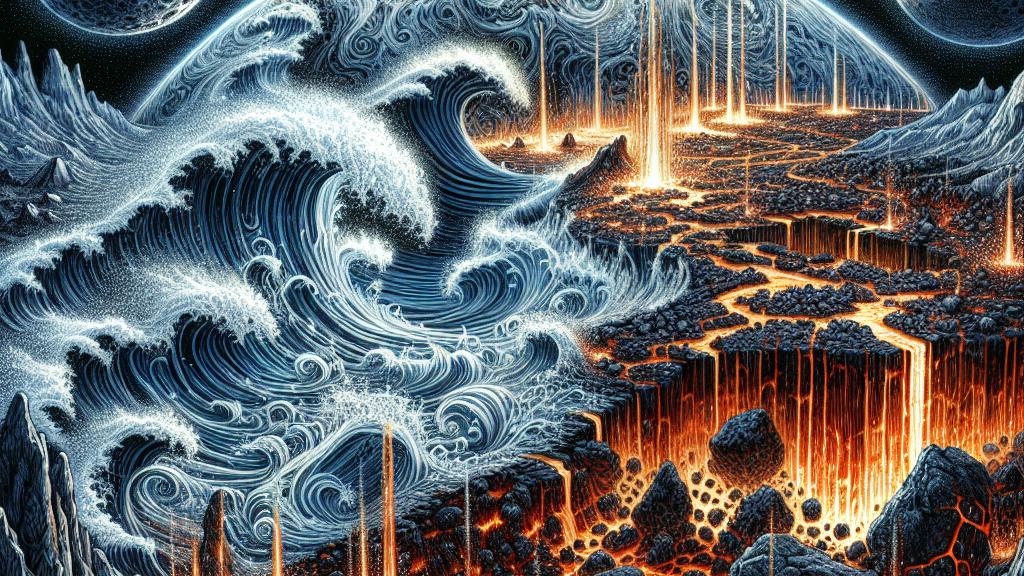How Magma Oceans Might Have Changed the Moon's Distance
Overview
- Imagine Earth, once a blazing sphere surrounded by molten magma.
- Lava tides, driven by the Moon’s gravity, reshaped their cosmic dance.
- The dynamics of early Earth offer insights into distant exoplanets.

Magma Oceans on Early Earth
Envision a primordial Earth, a dramatic and volatile realm where the surface was not just hot, but completely engulfed in blazing oceans of magma. This incredible scene unfolded around 4.4 billion years ago, following a catastrophic collision with a Mars-sized protoplanet known as Theia. From this chaos emerged the Moon, but instead of familiar blue oceans, the Earth was a molten landscape, its surface bubbling with lava. There is something fascinating about imagining massive tides of molten rock swirling in response to the Moon's gravitational influence! As the Moon hovered close by, the intense gravitational pull created towering waves of lava that rose and fell dramatically, all shaping the rotation of Earth just as ocean tides do today. These interactions were truly the cosmic heartbeat guiding the early evolution of our planet.
The Tidal Dance of Lava
Let’s delve deeper into this mesmerizing dance of nature! When we think of tides, we often picture calm seas, but in this case, we're talking about colossal lava tides. Due to the immense density of lava compared to water, these tidal forces might have been significantly more powerful, exerting a wild pressure that provoked substantial shifts in Earth’s rotation. Picture this: scientists estimate that the Moon could have sped away from Earth by an astonishing 25 Earth-radii in just 10,000 to 100,000 years! This rapid retreat is not merely a number; it’s like the Moon taking a swift and exhilarating ride away from Earth! It prompts us to rethink how celestial mechanics work over geological time, posing fascinating questions about the interplay of gravity in the formation and evolution of planetary systems.
Implications for Exoplanets
Now, imagine looking out into the vastness of space, where countless exoplanets orbit red dwarf stars, often experiencing conditions reminiscent of that early fiery Earth. These planets may also harbor molten surfaces, and if they do, they are likely subject to similar lava tides. Think about this intriguing concept: tidal locking, where one side of the planet is perpetually scorched while the other remains frozen in darkness, could be commonplace! Just like our own Earth, where life thrived after tumult, these alien worlds might support life forms adapted to extreme environments—life that could be distinctly unrecognizable to us! The implications are monumental, suggesting that the dynamics we witness in our solar system are mirrored elsewhere, igniting our imagination and curiosity about what forms life might take under such exotic circumstances, compelling us to explore the far reaches of our universe further.

Loading...